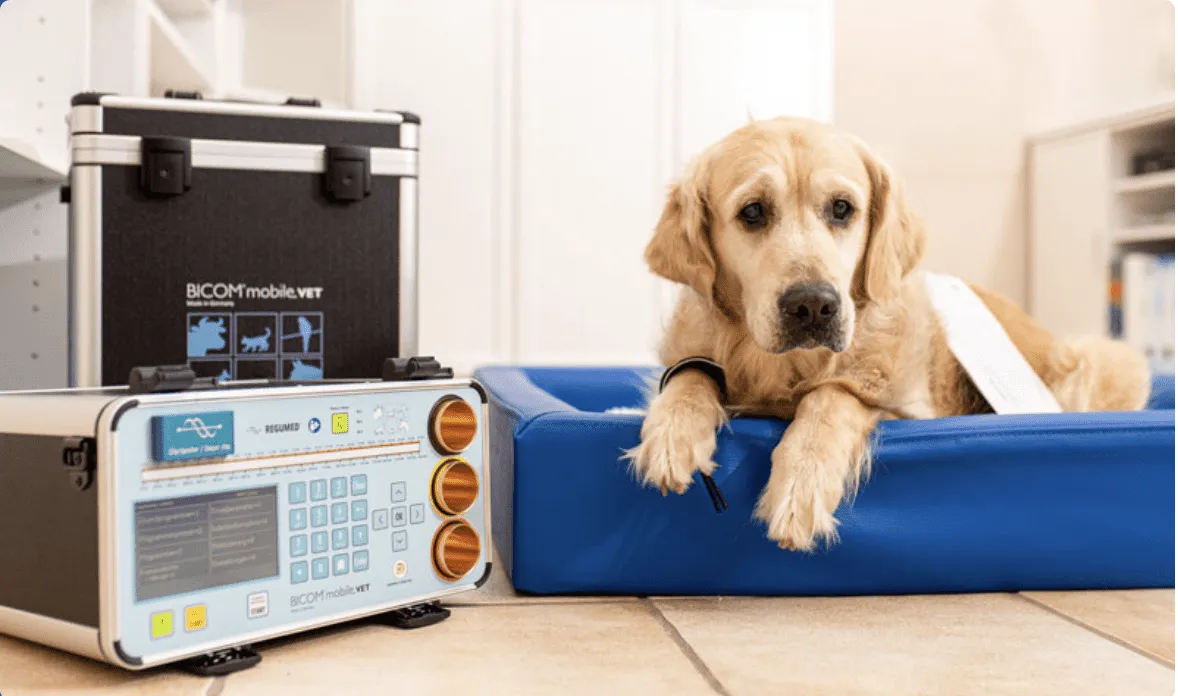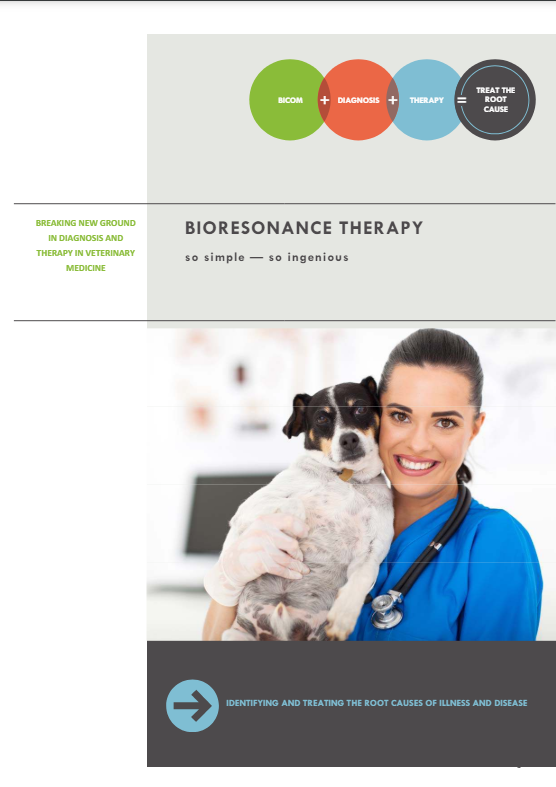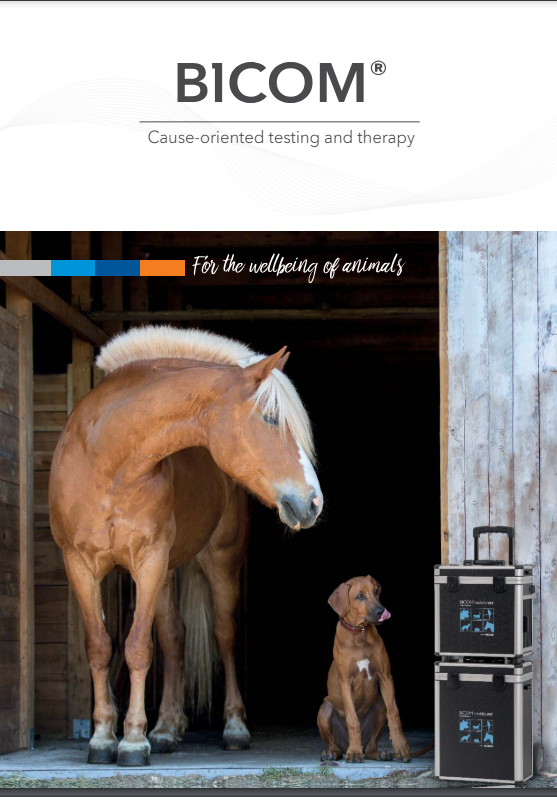BICOM® Bioresonance
Stress-free for pets and pet owners Suitable for all types of animals
There are many dogs , cats and horses suffering from health problems worldwide.
Be it problems with the musculoskeletal system, allergies and food intolerances or chronic diseases.
Sometimes, as an animal owner, you are at a loss when you can’t get any further with conventional therapy methods.
Like acupuncture or homeopathy, bioresonance belongs to the field of complementary medicine and is intended to be a useful supplement to conventional medicine.
It works with the body’s own wavelength of the four-legged friend, is used without medication and is painless to use.
Of course, not all health problems can be resolved with bioresonance. It is best to talk to a veterinarian or animal naturopath.
With our therapist finder you can find the nearest practice that can offer you BICOM® bioresonance.
Pain-free testing and therapy
Treatment with the BICOM® device is painless and stress-free. Especially sensitive animals feel very comfortable and it often happens that they completely relax and come to rest during the therapy.
Bioresonance has no harmful side effects and is used without medication.
Occasionally, initial aggravations, in what is known as the body’s initial reaction, can occur. However, these fade away after a short time.

What Pet Owners are saying..

Bioresonance Therapy And Pet Allergies
Custom HTML/CSS/JAVASCRIPT
Pets are adored by millions of people. Approximately 36.5% of American households own at least one dog, and around 30.4% own at least one cat, as reported by AVMA. One of the most unfortunate conditions to suffer from is pet allergies, especially for those individuals who truly adore their cat or dog. Pet allergies can cause numerous symptoms to occur, and may even lead to a person having to completely avoid being around their own pet, should the allergy symptoms be severe. Treatment options are available to assist with reducing the symptoms caused by pet allergies, but it is important to consider the fact that it is not always the pet that is directly causing the allergy symptoms. In this post, we are going to take a closer look at pet allergies, as well as discuss how Bioresonance technology can be useful in detecting and treating the condition.
Symptoms Of Pet Allergies
Detecting the symptoms of pet allergies is the first step to being diagnosed with the condition, as well as to seek out appropriate treatment options. The American College of Allergy, Asthma & Immunology explains that a person may experience a variety of symptoms when they are exposed to a dog or a cat, should they be suffering from pet allergies. These symptoms may include:
A stuffy or runny nose, as well as sneezing
Nasal congestion, which may cause pain in the face
Watery eyes that may also be red and itchy
Coughing, breathing problems and chest tightness
Some people also tend to develop hives or a skin rash after being exposed to a pet
Causes Of Pet Allergies
Pet allergy symptoms are caused by the exposure to pet allergens, which is usually in the form of proteins that the human body’s immune system overacts to. People with pet allergies usually suffer from an immune system that is over-sensitive; thus causing their body to treat the proteins expelled by the pet as a foreign substances. According to the Asthma and Allergy Foundation of America, it is important to note that pet hair is not an actual allergen, but rather collects particles that may contain allergens. Most commonly, allergens from pets are found in urine, dander and saliva of these pets – including both cats and dogs. It is also vital to understand that the fur of pets can also collect pollen and dust particles – in this case, these particles may be what is causing a person to experience the allergic reaction, and not specifically the proteins or allergens produced by the pet.
Treatment Options For Pet Allergies
The first line of treatment for individuals who are suffering pet allergies is to minimize their contact with the pet. Petting, hugging, kissing and holding pets should be avoided, and the person should ideally avoid being in the same room as a pet. This, however, does not guarantee that the person will not experience any type of allergic reactions – the allergens from pets can become airborne, which means they can travel to rooms in the house where the pet is not allowed in.
People who do live with a pet are recommended to install high-efficiency particular air purifiers in their houses, which may help to eliminate allergens from the air inside the house. Bathing the dog or cat on a weekly basis can also help to reduce the allergens expelled by their body becoming airborne.
Should an allergic reaction be experienced, a person can opt for a dose of antihistamines, which will help to prevent a further release of histamine, and assist with clearing up the symptoms the person is experiencing.
How Bioresonance Can Be Used To Detect And Treat Pet Allergies
Bioresonance technology utilizes a special type of device that has been programmed to read signals expelled from the body, rewrites the signals and then sends new signals back into the body. With the use of Bioresonance therapy, a person can be provided with more detailed information regarding their pet allergies. This technology can point out whether the person is truly allergic to their pets, or rather the pollen and dust that collects on the fur of their pets. Furthermore, Bioresonance technology can also point out possible causes of the allergic reaction a person experiences, which may help the person address these underlying causes; thus reducing the severity of the symptoms they experience when exposed to a pet.




Facebook
Instagram
Mail